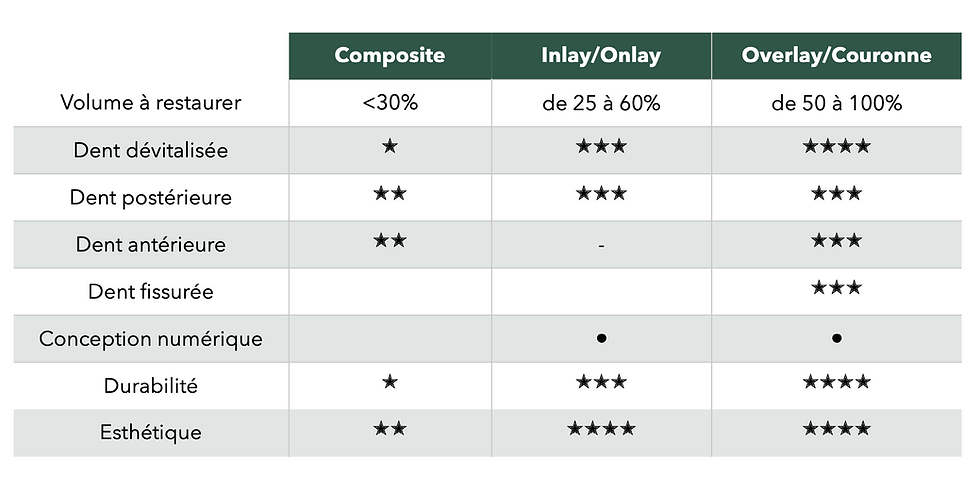What material to repair my tooth?
- Biodental Tournai

- 5 juil. 2024
- 1 min de lecture

Composite? Ceramic? Inlay/Onlay, Overlay? Crown ? There are several types of restorations to repair a fragile, broken or decayed tooth. Here is a short guide to guide you in this choice.
Choice criteria
It is first of all the volume to be restored which will determine the type of repair. But not only that: the location of the tooth, its general condition, its history and its vitality are criteria to take into account. Aesthetic or non-aesthetic research can be decisive.
The composite
Composite is the modern “filling” , it is a tooth-colored resin, quick to make. Composite is suitable for small to medium cavities, mostly on vital teeth.
Direct composite restoration techniques, carried out in-vivo , are generally indicated for volumes less than 30% of the tooth, in easily accessible areas and on teeth in good general condition. It is the dentist who sculpts the restoration directly in the mouth.
Ceramics
Indirect ceramic techniques are carried out in-vitro in the prosthesis laboratory and allow better reconstruction of anatomy and aesthetics, while benefiting from the extreme mechanical resistance of ceramic.
They are particularly indicated when the decay of the tooth exceeds 30% of the volume. There are several types of ceramic restorations: onlays , crowns , veneers . Durability is more important, and this avoids having to re-operate the tooth too often.
Comparative table

